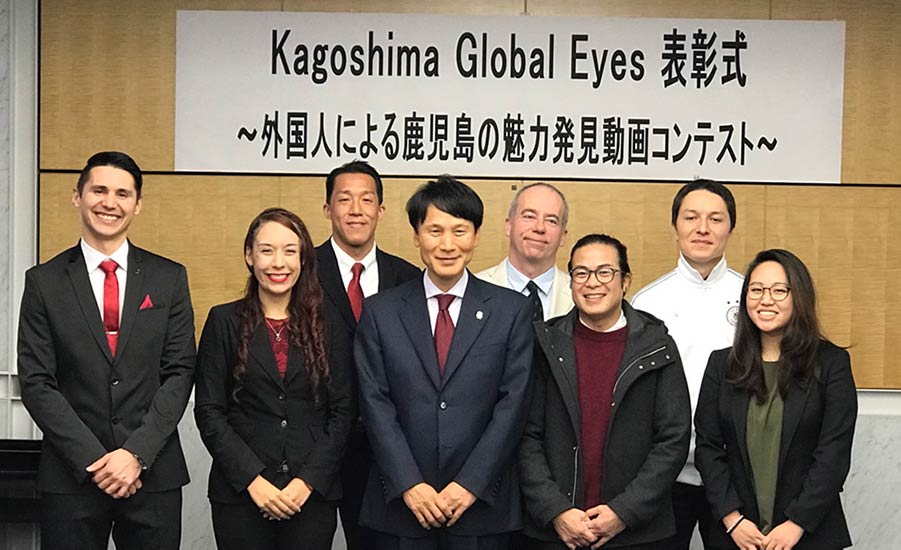Sendai Ōtsunahiki, Japan's most original tug of war festival
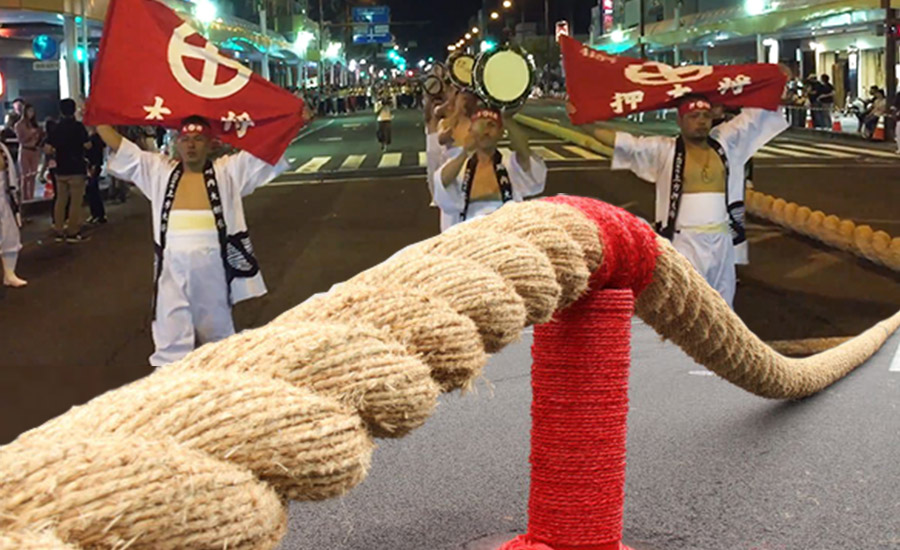
Written by Tanie
Translated by A Osorio
13.9.2021 (Re:24.12.2021)
Sendai Ōtsunahiki (Rope Festival) is a festival held in Satsumasendai City, Kagoshima Prefecture, every September, the day before the autumnal equinox. Approximately 3,000 men called “Hadaka” without shirts and the lower part wrapped in “sarashi” (long white cloth) compete by pulling the rope that is considered the largest in Japan, measuring 365 meters long and weighing around 7 tons. This festival has a history of more than 420 years and is designated as an intangible folk cultural property of Kagoshima Prefecture.
■Contents
1. History of Tug of War – Sendai Ōtsunahiki
2. Sendai Ōtsunahiki begins with braiding
4. Formation of the “Kamigata and Shimogata” teams
5. Sanyaku – The three most popular roles of Sendai’s Ōtsunahiki
6. Ōtsunahiki traditions and beliefs
1. History of Tug of War – Sendai Ōtsunahiki
 As an Olympic sport, tug of war was included in athletics events from the 2nd Olympic Games in Paris in 1900 to the 7th Games in Amberes in 1920, but due to the problem of weight gain of participating athletes, it has been eliminated from the Olympics since the 8th Olympics.
As an Olympic sport, tug of war was included in athletics events from the 2nd Olympic Games in Paris in 1900 to the 7th Games in Amberes in 1920, but due to the problem of weight gain of participating athletes, it has been eliminated from the Olympics since the 8th Olympics.
The history of tug of war also has a long history in Japan, and it is practiced in various places as a ritual to pray for a good harvest, to predict what the future holds, or to defuse conflict. This time we introduce you to “Sendai Ōtsunahiki” the Satsumasendai City Rope Festival which started during the Keicho era (1596-1614), and is said to have been started by Yoshihiro Shimazu during the Battle of Sekigahara to raise the morale of the soldiers. This festival has a history of more than 420 years, and it is said that whoever wins the game will prosper in business and produce a good harvest.
2. Sendai Ōtsunahiki begins with braiding
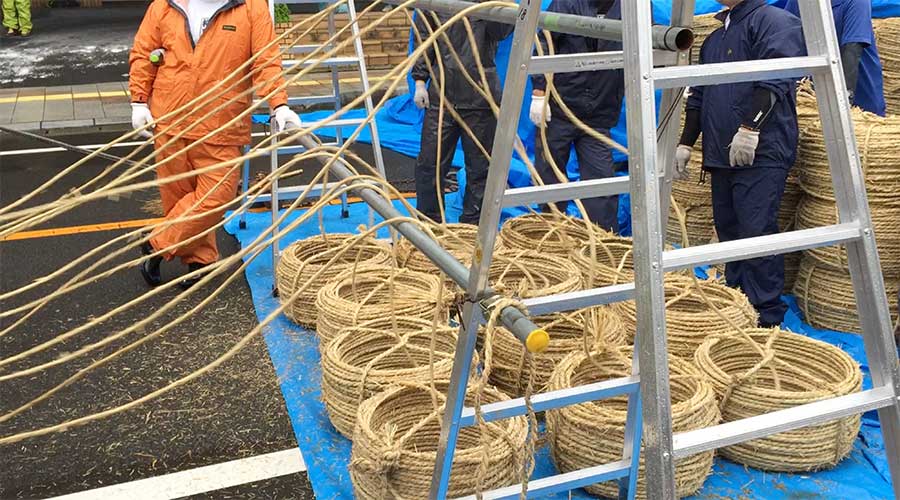 For this event, the Great Rope begins by braiding from 365 fine ropes, this rope is prepared on the same day of the festival from early in the morning until approximately noon. Around 1,500 people, including the Ground Self-Defense Force, the Construction Industry Association, local middle and high school students along with local citizens join forces to form this large rope, using Aranawa (Dried Rice Stalks and wheat) that come from farmers in Satsumasendai city.
For this event, the Great Rope begins by braiding from 365 fine ropes, this rope is prepared on the same day of the festival from early in the morning until approximately noon. Around 1,500 people, including the Ground Self-Defense Force, the Construction Industry Association, local middle and high school students along with local citizens join forces to form this large rope, using Aranawa (Dried Rice Stalks and wheat) that come from farmers in Satsumasendai city.
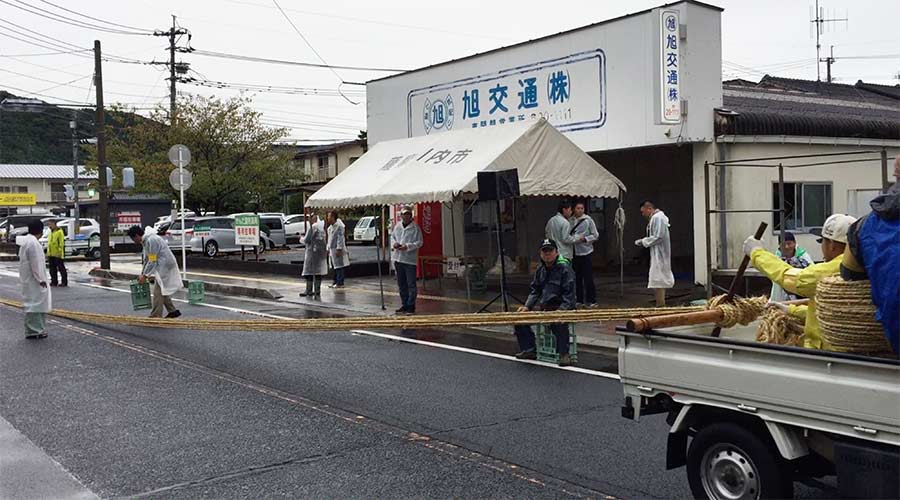
1. In the first place, three large groups are created, joining 121 strings for one of the groups and 122 strings for two of the groups, then it is sprinkled with water so that it does not break easily.

2. Approximately 1,500 people collaborate to turn them with their feet and wind each group of ropes.
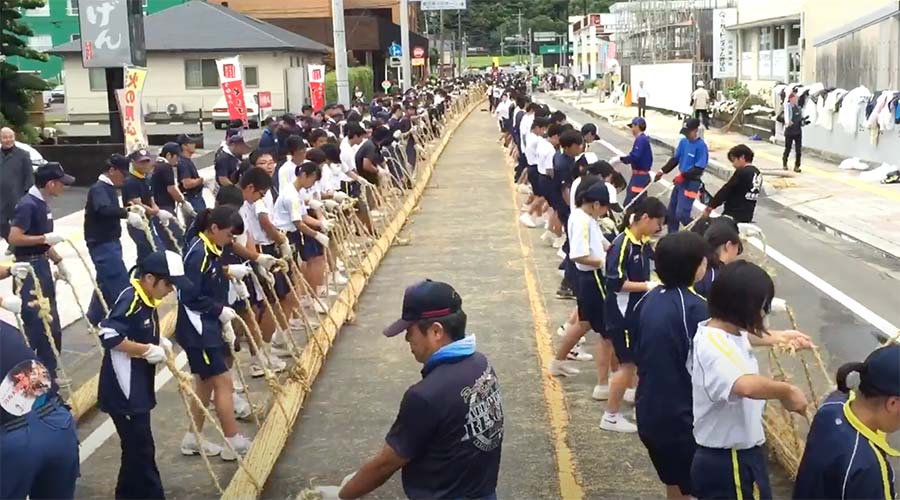
3. Special tools are used to combine the three groups of strings into one.
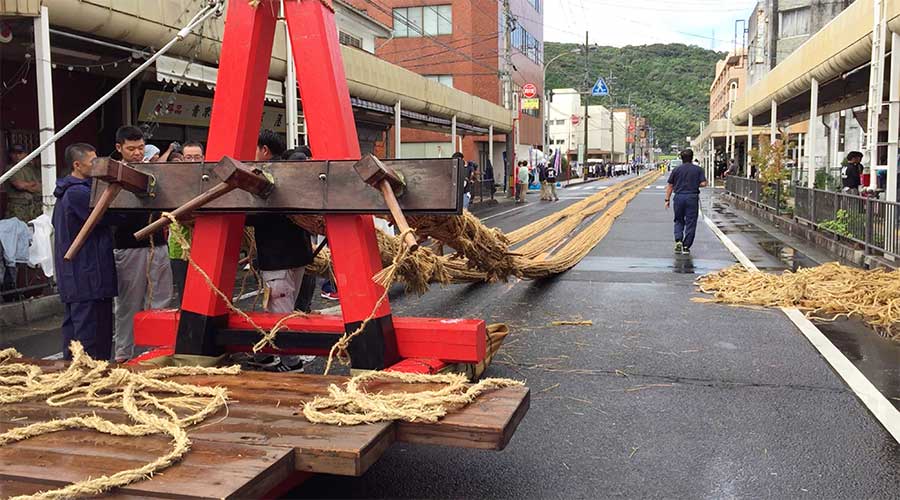
4. Once the three groups have been twisted into one, all the members and participants carry it on their shoulders and carry it to the place of the confrontation.
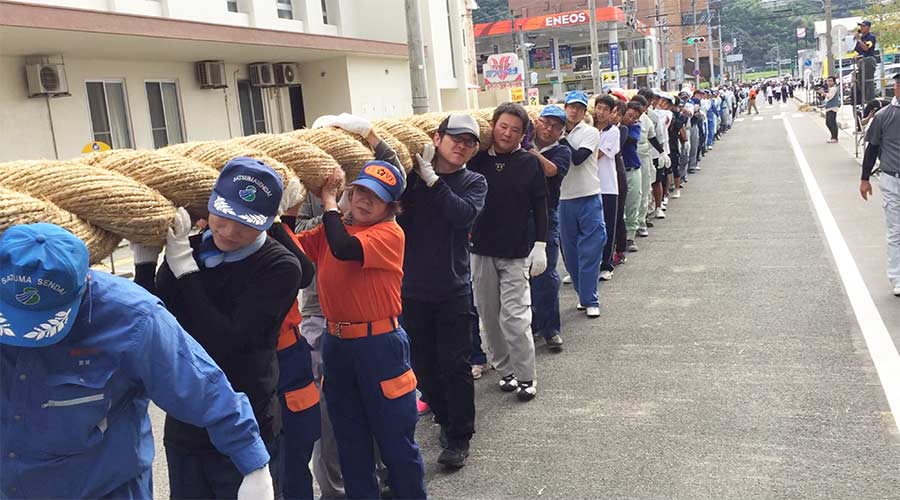
5. Once at the place of confrontation, knots are created at both ends of the rope called Wasa.
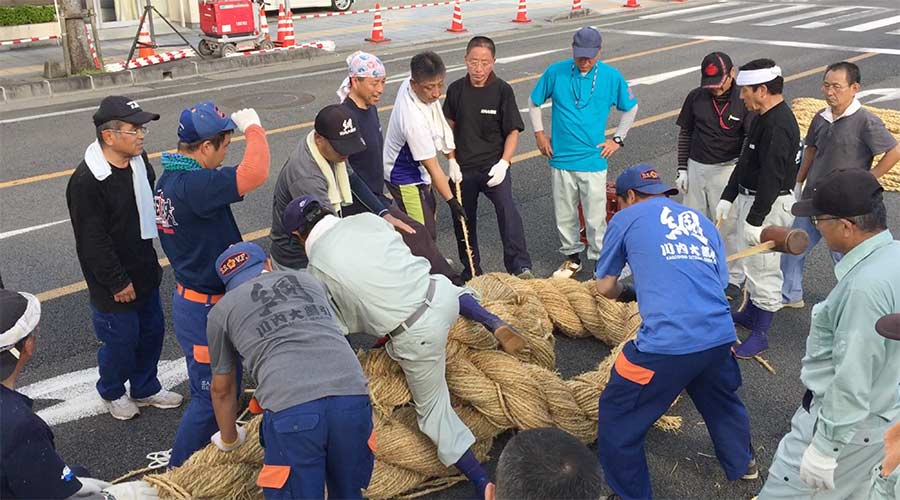
6. The center of the large rope is wrapped with thin ropes and painted in red, then it is placed on a cylinder also red called “Danki” to complete the preparation.
 The finished rope is 365m long, 7 tons in weight and 40cm in diameter. The rope made early in the morning will only be used that day, then cut in half with a saw at the end of the event.
The finished rope is 365m long, 7 tons in weight and 40cm in diameter. The rope made early in the morning will only be used that day, then cut in half with a saw at the end of the event.
3. Rules of Ōtsunahiki
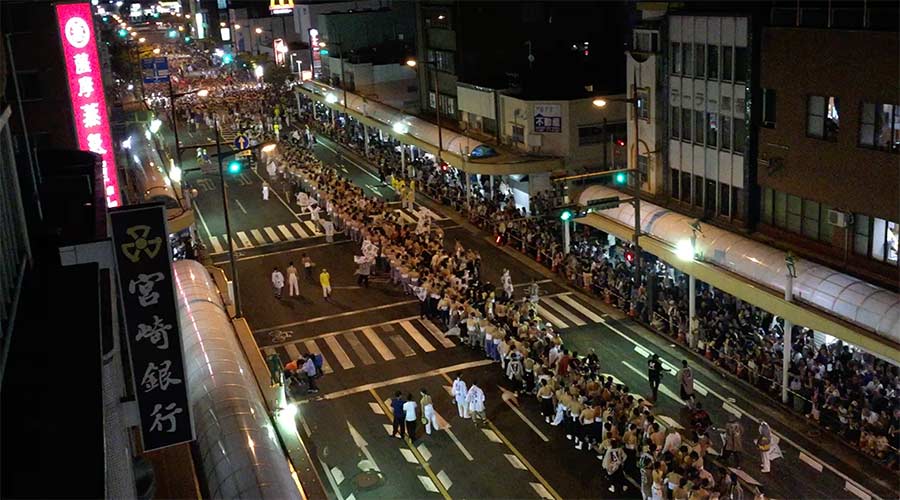 The danki marks the center of the rope and in turn the dividing line between the Kamigata (red team) and Shimogata (white team) from this point they start the tug of war between shocks and shoves. This pull and loosen continues for about two and a half to three hours. The moment the referee realizes that there is no longer movement of the rope, he puts a saw on the rope on the loser’s side and cuts it, thus reaching its end.
The danki marks the center of the rope and in turn the dividing line between the Kamigata (red team) and Shimogata (white team) from this point they start the tug of war between shocks and shoves. This pull and loosen continues for about two and a half to three hours. The moment the referee realizes that there is no longer movement of the rope, he puts a saw on the rope on the loser’s side and cuts it, thus reaching its end.
4. Formation of the “Kamigata and Shimogata” teams
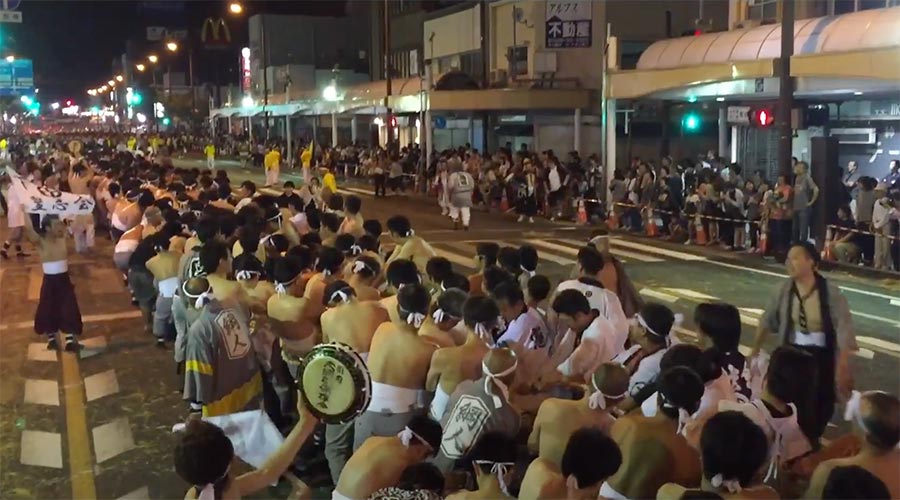 Each team consists of a group of drums(太鼓隊), a push group(押し隊), a group of those who pull(引き隊) and a person in charge of hooking the knot of the ends(ワサ係). The first drum(一番太鼓), the general(大将) and the general thrust(押大将) are the ones that control the whole unit.
Each team consists of a group of drums(太鼓隊), a push group(押し隊), a group of those who pull(引き隊) and a person in charge of hooking the knot of the ends(ワサ係). The first drum(一番太鼓), the general(大将) and the general thrust(押大将) are the ones that control the whole unit.
The drum group or taikotai consists of 10 people, from drum one (Ichibandaiko) to drum ten (Jūbandaiko), who are in charge of giving instructions for the attacks. The function of the push group is to take a position in the center of the rope and push as the name suggests to throw opponents off balance. The group that is in charge of pulling is located behind the pushing group and they act according to the signals of the drum pulling or loosening the rope. The wasa keeper, who refers to the ring or knot at the end of the rope, is in charge of introducing the ring to the danki when the situation becomes unfavorable so that it cannot be pulled further. There is no limit to the number of participants, so both teams are fighting to gather as many members as possible.
5. Sanyaku – The three most popular roles of Sendai’s Ōtsunahiki
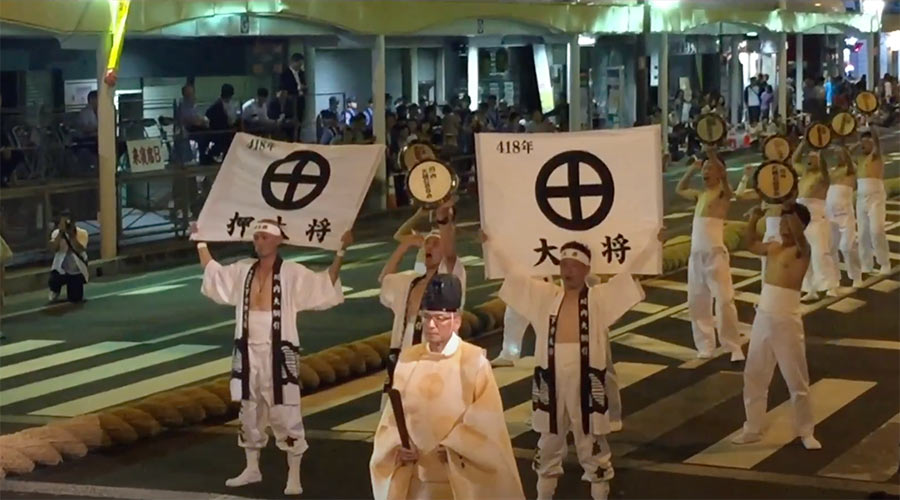 It can be said that the Sanyaku (three roles) “Ichibantaiko”, “Taishō” and “Oshitaishō” are the most popular positions and the one that attracts the most attention in the Sendai Rope Festival, due to the important role they have to play, taking the number one command of the whole group, and it is a position of great honor that can only be done once in a lifetime.
It can be said that the Sanyaku (three roles) “Ichibantaiko”, “Taishō” and “Oshitaishō” are the most popular positions and the one that attracts the most attention in the Sendai Rope Festival, due to the important role they have to play, taking the number one command of the whole group, and it is a position of great honor that can only be done once in a lifetime.
In Sendai Ōtsunahiki, the sound of the drums is a signal to the Hikitai (group that pulls the rope). The taikōtai (group of drums) consists of 10 people, of which drum No. 1 “Ichibantaiko” is in charge of giving the signal to pull the rope.
The Taishō or “general” moves from the center to the sides of both ends of the rope to capture the situation, direct and inspire the whole group.
The push general “Oshitaishō” leads the push group, to push the opposing group to unbalance them and thus make it easier for their team to pull the rope. The Sendai City tug of war takes place annually in the Ōshōji and Mukoda areas, changing areas each year. When performed in the Mukoda area, drum No. 1 “Ichibantaikō” is considered the protagonist, but when performed on the side of Ōshōji, General “Taishō” becomes the protagonist of the event.
6. Ōtsunahiki traditions and beliefs
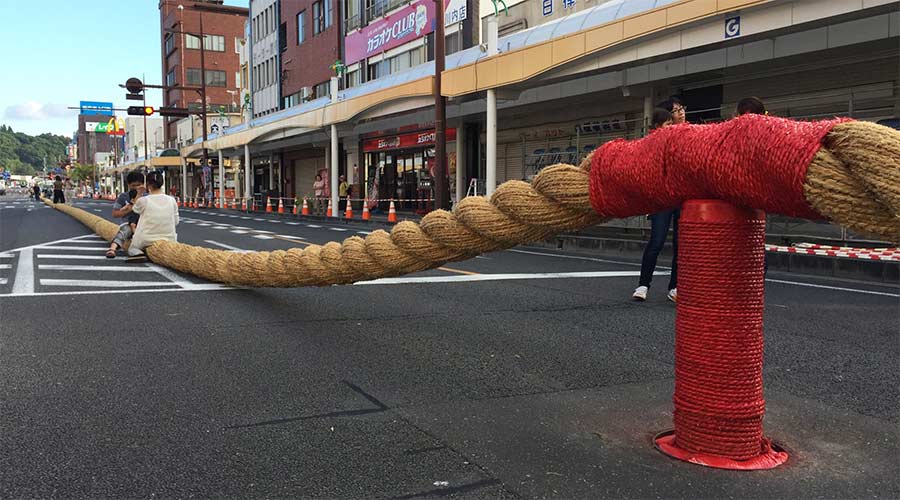 Once the event is over, you can take home some pieces or cuts of the gigantic rope as an amulet, it is said that by decorating it at the entrance of the house you can lead a life free of disease. It is also said that if you sit a child on the rope, he will grow vigorously.
Once the event is over, you can take home some pieces or cuts of the gigantic rope as an amulet, it is said that by decorating it at the entrance of the house you can lead a life free of disease. It is also said that if you sit a child on the rope, he will grow vigorously.
7. Sendai Ōtsunahiki video
Here is a video of Sendai Ōtsunahiki that was awarded in 2017 by the Kagoshima Prefecture. A contest that was organized by the same Prefecture under the theme “Kagoshima Global Eyes”.
8. Cancellation notice
Due to the effects of Covid19, the event has been canceled in 2020 and 2021.
9. Ōtsunahiki no koi movie
In May 2021, a movie called “Otsunahiki no Koi” was released based mainly on this Sendai Ōtsunahiki event.
| Recommended Products
| Recommended Articles
“KAGOSHIMA” Its beauties and charms from the perspective of foreigners
Written by D. Carnegie
Translated by A Osorio
The information in this article was current at the time of coverage and writing.
・・・ todonavi ・・・
